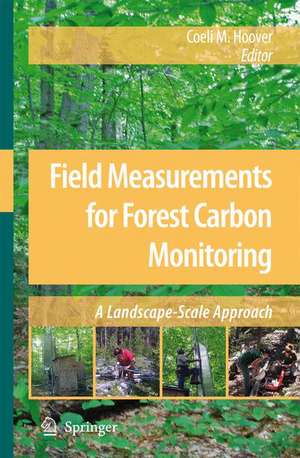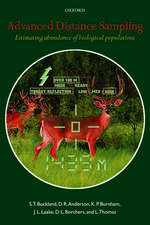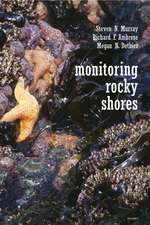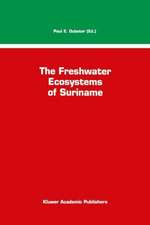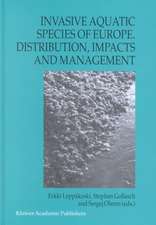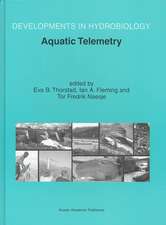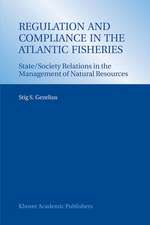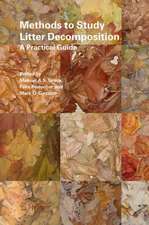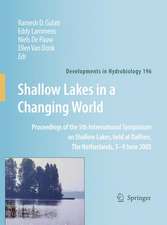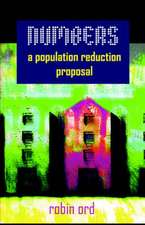Field Measurements for Forest Carbon Monitoring: A Landscape-Scale Approach
Editat de Coeli M Hooveren Limba Engleză Hardback – 24 sep 2008
| Toate formatele și edițiile | Preț | Express |
|---|---|---|
| Paperback (1) | 942.76 lei 6-8 săpt. | |
| SPRINGER NETHERLANDS – 19 oct 2010 | 942.76 lei 6-8 săpt. | |
| Hardback (1) | 949.73 lei 6-8 săpt. | |
| SPRINGER NETHERLANDS – 24 sep 2008 | 949.73 lei 6-8 săpt. |
Preț: 949.73 lei
Preț vechi: 1158.20 lei
-18% Nou
Puncte Express: 1425
Preț estimativ în valută:
181.74€ • 194.33$ • 151.52£
181.74€ • 194.33$ • 151.52£
Carte tipărită la comandă
Livrare economică 18 aprilie-02 mai
Preluare comenzi: 021 569.72.76
Specificații
ISBN-13: 9781402085055
ISBN-10: 1402085052
Pagini: 250
Ilustrații: XVII, 240 p.
Dimensiuni: 155 x 235 x 17 mm
Greutate: 0.57 kg
Ediția:2008
Editura: SPRINGER NETHERLANDS
Colecția Springer
Locul publicării:Dordrecht, Netherlands
ISBN-10: 1402085052
Pagini: 250
Ilustrații: XVII, 240 p.
Dimensiuni: 155 x 235 x 17 mm
Greutate: 0.57 kg
Ediția:2008
Editura: SPRINGER NETHERLANDS
Colecția Springer
Locul publicării:Dordrecht, Netherlands
Public țintă
Professional/practitionerCuprins
Establishing a Landscape-Scale Forest Carbon Monitoring Site.- Defining a Landscape-Scale Monitoring Tier for the North American Carbon Program.- Study Site Characterization.- Meteorological Measurements.- Measuring Aboveground Carbon Pools.- Estimating Aboveground Carbon in Live and Standing Dead Trees.- Measuring Carbon in Shrubs.- Estimating the Carbon in Coarse Woody Debris with Perpendicular Distance Sampling.- Measuring Aboveground Carbon Fluxes.- Measuring Litterfall and Branchfall.- Methods for Estimating Litter Decomposition.- Measuring the Decomposition of Down Dead-Wood.- Measuring Belowground Carbon Pools and Fluxes.- Measuring Forest Floor, Mineral Soil, and Root Carbon Stocks.- Quantifying Soil Respiration at Landscape Scales.- Measurement of Methane Fluxes from Terrestrial Landscapes Using Static, Non-steady State Enclosures.- Measurement and Importance of Dissolved Organic Carbon.- Supplemental Variables for Carbon Cycle Modeling.- Forest Canopy Structural Properties.- Estimation of Forest Canopy Nitrogen Concentration.- Lessons from the Past and Opportunities in the Future.- Integrating Field Measurements with Flux Tower and Remote Sensing Data.- Landscape-Scale Carbon Sampling Strategy – Lessons Learned.
Textul de pe ultima copertă
This volume is a comprehensive guide to the methods and techniques employed in forest carbon inventory and monitoring. Since forest carbon research is interdisciplinary, it is unlikely that any one investigator will possess expertise in all of the types of measurements needed to conduct forest carbon research at scales larger than a forest stand. Techniques used to characterize standing stocks of carbon in a forest, measure key carbon fluxes, and collect related data (such as forest canopy nitrogen concentrations and meteorological measurements) that are required to drive process models, develop predictive relationships, and link to remote sensing data are described in detail. In addition to the measurement methods, the chapters include background information, necessary calculations, and equipment requirements.
The field of forest carbon research is growing rapidly, and Field Measurements for Forest Carbon Monitoring provides an excellent reference for the many and varied techniques necessary to characterize the forest carbon cycle. While the book outlines an entire forest carbon monitoring program, each chapter stands alone as a reference for measuring the variable described, and sufficient background discussion is included to allow investigators to determine if a particular measurement is warranted in their research program.
The field of forest carbon research is growing rapidly, and Field Measurements for Forest Carbon Monitoring provides an excellent reference for the many and varied techniques necessary to characterize the forest carbon cycle. While the book outlines an entire forest carbon monitoring program, each chapter stands alone as a reference for measuring the variable described, and sufficient background discussion is included to allow investigators to determine if a particular measurement is warranted in their research program.
Caracteristici
Brings together all of the methods needed for measuring and monitoring forest carbon pools and fluxes into one volume Presents a roadmap for creating forest carbon monitoring sites that can be used as a link between remotely sensed data and national scale inventories Includes a chapter on lessons learned while implementing the protocols at a variety of field sites Multidisciplinary volume suitable for investigators from a variety of fields; background information on each type of measurement is provided and specialized knowledge is not assumed
